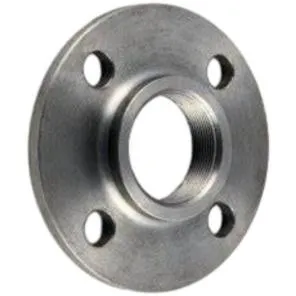-
Cangzhou Yulong Steel Co., Ltd.
-
Phone:
+86 13303177267 -
Email:
admin@ylsteelfittings.com
- English
- Arabic
- Italian
- Spanish
- Portuguese
- German
- kazakh
- Persian
- Greek
- French
- Russian
- Polish
- Thai
- Indonesian
- Vietnamese
- Zulu
- Korean
- Uzbek
- Hindi
- Serbian
- Malay
- Ukrainian
- Gujarati
- Haitian Creole
- hausa
- hawaiian
- Hebrew
- Miao
- Hungarian
- Icelandic
- igbo
- irish
- Japanese
- Javanese
- Kannada
- Khmer
- Rwandese
- Afrikaans
- Albanian
- Amharic
- Armenian
- Azerbaijani
- Basque
- Belarusian
- Bengali
- Bosnian
- Bulgarian
- Catalan
- Cebuano
- China
- China (Taiwan)
- Corsican
- Croatian
- Czech
- Danish
- Esperanto
- Estonian
- Finnish
- Frisian
- Galician
- Georgian
- Kurdish
- Kyrgyz
- Lao
- Latin
- Latvian
- Lithuanian
- Luxembourgish
- Macedonian
- Malgashi
- Malayalam
- Maltese
- Maori
- Marathi
- Mongolian
- Myanmar
- Nepali
- Norwegian
- Norwegian
- Occitan
- Pashto
- Dutch
- Punjabi
- Romanian
- Samoan
- Scottish Gaelic
- Sesotho
- Shona
- Sindhi
- Sinhala
- Slovak
- Slovenian
- Somali
- Sundanese
- Swahili
- Swedish
- Tagalog
- Tajik
- Tamil
- Tatar
- Telugu
- Turkish
- Turkmen
- Urdu
- Uighur
- Welsh
- Bantu
- Yiddish
- Yoruba

Dec . 25, 2024 18:44 Back to list
Threaded Couplings for Pipe Connections and Their Applications in Various Industries
Understanding Pipe Coupling Threads A Comprehensive Overview
In the world of plumbing and piping systems, the significance of pipe coupling threads cannot be overstated. These threads are crucial components that allow pipes and fittings to connect securely, ensuring the integrity and functionality of various systems, whether in residential, commercial, or industrial settings. This article delves into the fundamentals of pipe coupling threads, their types, applications, and installation considerations.
What are Pipe Coupling Threads?
Pipe coupling threads refer to the helical ridges or grooves cut into the end of a pipe or fitting, allowing two pieces to connect through a threaded joint. The threads provide a tighter seal compared to unthreaded fittings, preventing leaks and ensuring a robust connection. Typically made from materials like steel, stainless steel, brass, or plastic, these threaded couplings can accommodate a variety of applications, including water supply, gas distribution, and irrigation systems.
Types of Pipe Threads
There are several types of pipe threads, with the most common being
1. NPT (National Pipe Tapered) This type is widely used in the United States and features a tapered design that creates a pressure-tight seal when tightened. The angle of the thread is 60 degrees, and it is often employed in applications requiring strong and leak-proof fittings, such as in gas and oil pipelines.
2. BSP (British Standard Pipe) Predominantly used in the UK and other countries, BSP threads come in two variations BSPT (tapered) and BSPP (parallel). BSPT threads also form a seal due to their taper, while BSPP relies on washers or O-rings for sealing.
3. Metric Threads In many global contexts, especially in Europe, metric fittings are common. These threads are characterized by their dimensions in millimeters and are often used in high-pressure applications due to their precise fitting.
4. PVC Threads For plastic piping systems, threads can also be cut into PVC pipes. These are typically found in irrigation and drainage systems where corrosion resistance is vital.
Applications of Pipe Coupling Threads
pipe coupling threaded

Pipe coupling threads have ubiquitous applications across various industries. In residential plumbing, they connect fixtures, hoses, and pipelines. In industrial settings, they may be part of larger machinery, facilitating the transport of liquids and gases.
Oil and gas industries rely heavily on threaded couplings due to their ability to withstand high pressures and corrosive environments. Chemical processing plants also use these threads for safe and efficient movement of hazardous substances. Additionally, water treatment facilities utilize threaded connections to ensure safe drinking water delivery.
Installation Considerations
Proper installation of pipe coupling threads is critical to ensuring a reliable seal. Some key considerations include
- Choosing the Right Thread Type It is essential to match the thread type (NPT, BSP, Metric, etc.) to the other components in the system to avoid compatibility issues.
- Thread Sealing For tapered threads like NPT and BSPT, thread sealant tape or compound is often used to enhance the seal and prevent leaks. For parallel threads, flat washers are recommended.
- Proper Tightening Over-tightening can lead to stripped threads or damaged fittings, while under-tightening may result in leaks. It is vital to follow manufacturer guidelines for torque specifications.
- Regular Inspection Periodically inspect threaded joints for signs of wear, corrosion, or damage to maintain the integrity of the piping system.
Conclusion
Pipe coupling threads are indispensable in a wide array of piping systems, providing secure, leak-proof connections essential for safety and efficiency. Understanding the different types of threads, their applications, and installation practices is crucial for anyone involved in plumbing, construction, or industrial maintenance. As technology advances, the importance of these fundamental components remains vital in ensuring the reliability of our water, gas, and chemical transport systems.
Latest news
-
ANSI 150P SS304 SO FLANGE
NewsFeb.14,2025
-
ASTM A333GR6 STEEL PIPE
NewsJan.20,2025
-
ANSI B16.5 WELDING NECK FLANGE
NewsJan.15,2026
-
ANSI B16.5 SLIP-ON FLANGE
NewsApr.19,2024
-
SABS 1123 FLANGE
NewsJan.15,2025
-
DIN86044 PLATE FLANGE
NewsApr.19,2024
-
DIN2527 BLIND FLANGE
NewsApr.12,2024
-
JIS B2311 Butt-Welding Fittings LR/SR 45°/90° /180°Seamless/Weld
NewsApr.23,2024











